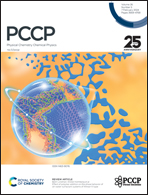Visualizing and characterizing excited states from time-dependent density functional theory
Abstract
Time-dependent density functional theory (TD-DFT) is the most widely-used electronic structure method for excited states, due to a favorable combination of low cost and semi-quantitative accuracy in many contexts, even if there are well recognized limitations. This Perspective describes various ways in which excited states from TD-DFT calculations can be visualized and analyzed, both qualitatively and quantitatively. This includes not just orbitals and densities but also well-defined statistical measures of electron–hole separation and of Frenkel-type exciton delocalization. Emphasis is placed on mathematical connections between methods that have often been discussed separately. Particular attention is paid to charge-transfer diagnostics, which provide indicators of when TD-DFT may not be trustworthy due to its categorical failure to describe long-range electron transfer. Measures of exciton size and charge separation that are directly connected to the underlying transition density are recommended over more ad hoc metrics for quantifying charge-transfer character.

- This article is part of the themed collection: 2024 PCCP Reviews


 Please wait while we load your content...
Please wait while we load your content...
